Despite the frustration, most residents are hopeful the new rules will be a step in the right direction for the growing city
CAMAS — A standing-room-only crowd was on hand at Monday night’s Camas City Council meeting. Members of the council were set to vote on a new Urban Tree Program that had been two years in the making.
“Why the heck do you allow clear cutting — non-stop clear cutting?” asked an emotional Madeline Lyne, who has lived in Camas since 2002. “Every time I drive around this town, I feel like I have to not go that way again. Because, once again, clear cutting, houses crammed together. Is that the quaint wonderful town of Camas we want to create for ourselves? I would think it’s not.”
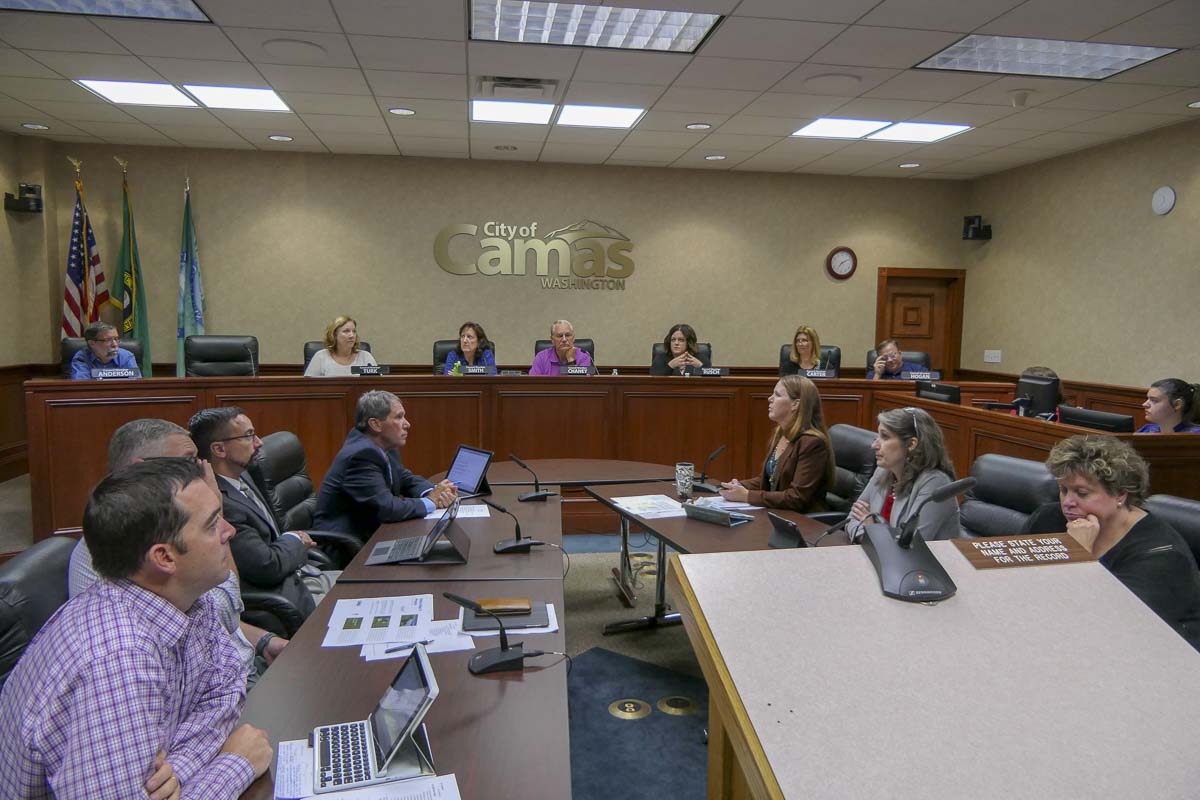
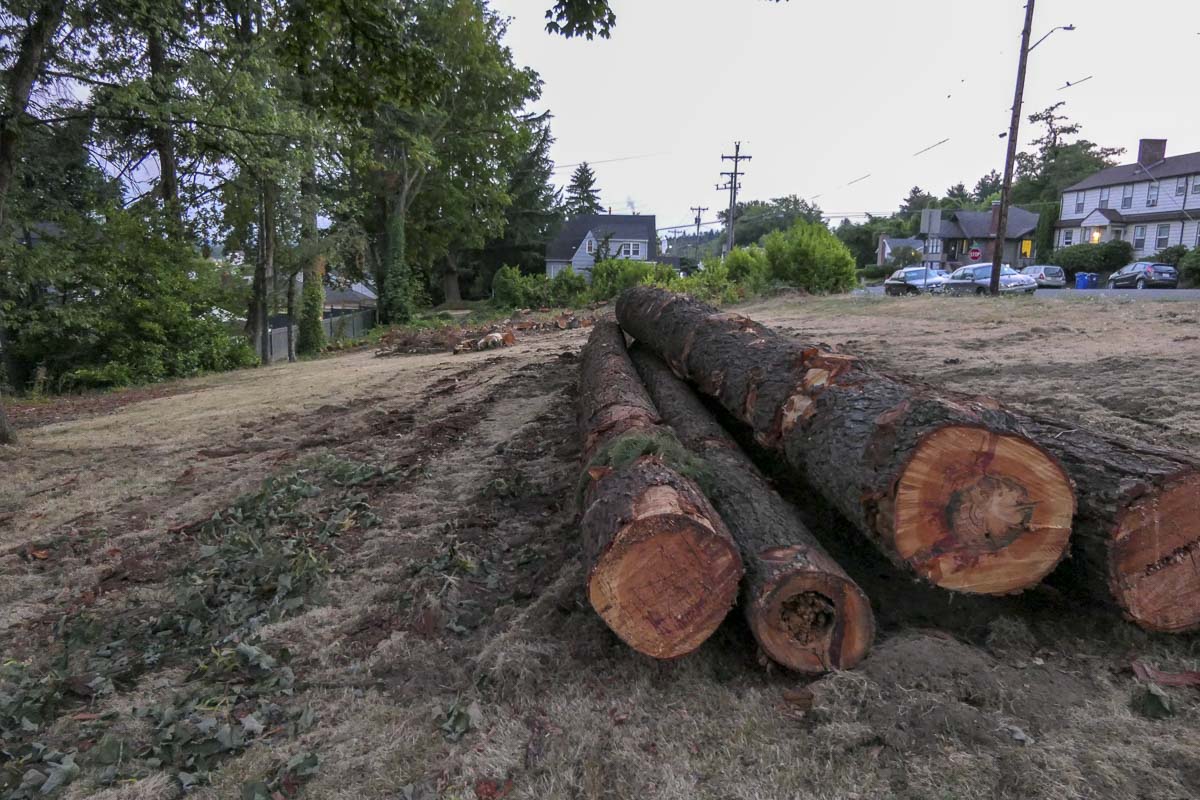
Emotions, at times, ran as hot as the weather outside as frustrated residents berated members of the council for failing to address the concerns about tree removal during the adoption of the Camas 2035 Comprehensive Plan in June of 2016.
“You’re residents here too. Do you like what you see? Do you?” Lyne challenged the council members, eliciting a few to respond by shaking their heads. “I hate it! I absolutely hate it. And I feel so helpless because it continues. And I know that lots of people feel this way. … If the developers don’t like it, they can go develop somewhere else. There’s plenty of places to develop.”
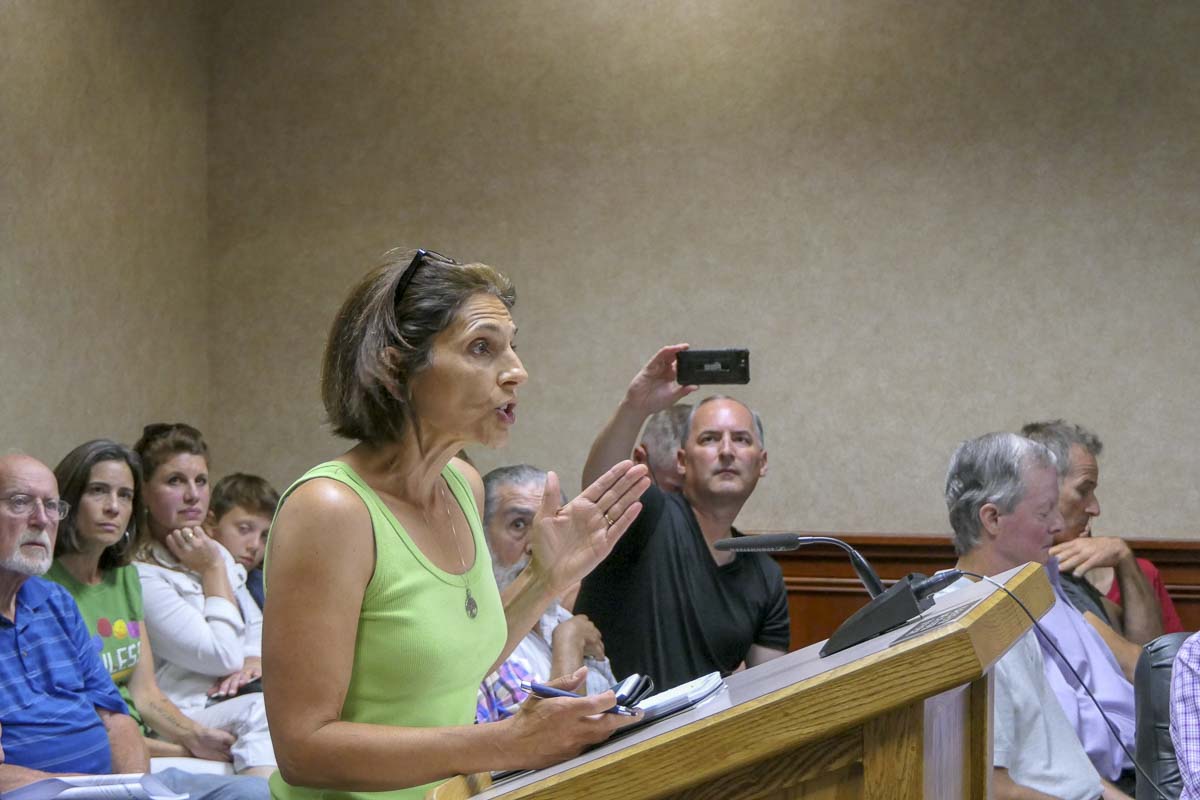
Lyne’s comments were echoed by many of the 16 people who spoke during the public hearing. Several were irked that dozens of new developments have been approved during the two years that city staff had been studying and developing the new Urban Tree Program.
“You don’t replace a tree that has been growing for 90, 110, 120, 130 years with a seedling that is the thickness of my little finger and call it good,” said Camas resident Chris Martinez. “That’s insane. We really do have a responsibility for our future to provide a good, healthy environment that only comes about because the tree canopy is given the respect that it deserves.”
The lack of a coherent urban forest management plan even came as a surprise to Denis Hayes, a former Camas resident who helped to coordinate the first Earth Day in 1970, and has a school in Camas named after him. Resident Alicia King read part of a letter Hayes had written her about the controversy.
“When I think back to my youth in Camas, trees loom large in my mind,” Hayes wrote. “I must have passed hundreds of trees, some of them magnificent, every single day. I’ve always assumed Camas had a strong tree ordinance, and I’m startled to learn that the city is only now addressing the issue.”
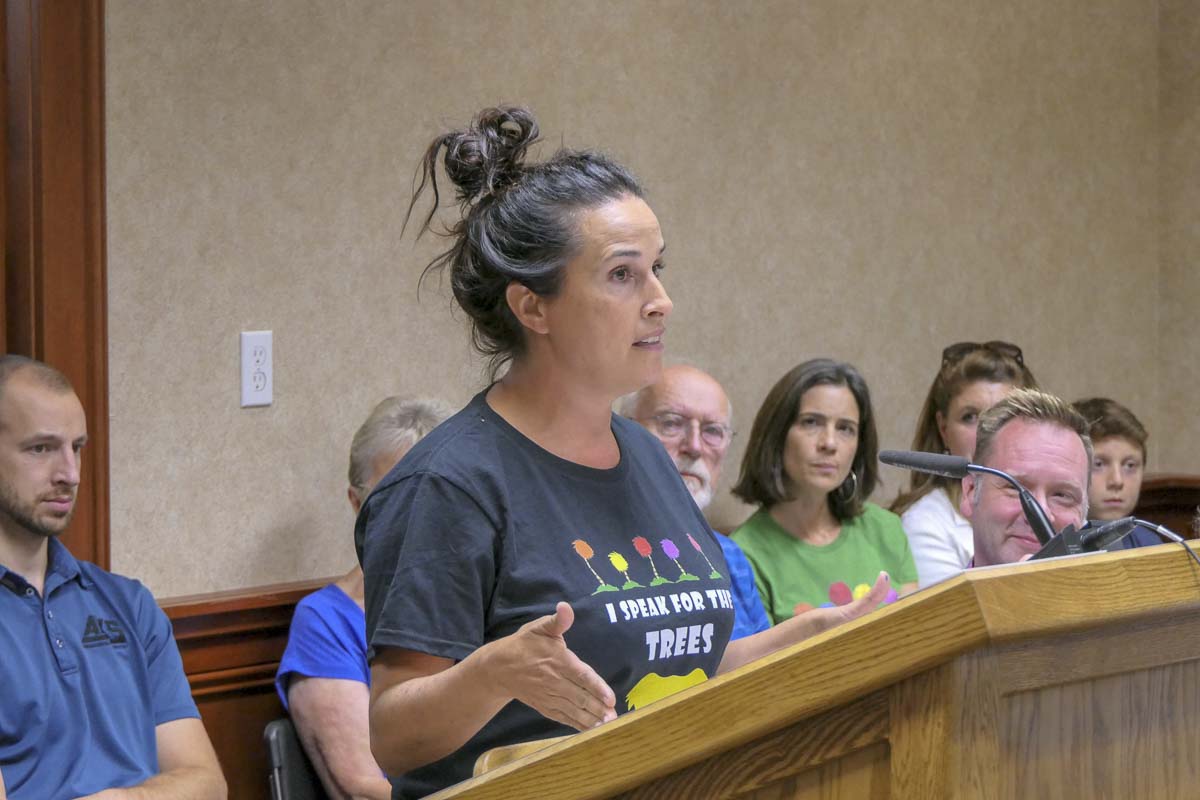
The city began digging into the urban tree situation in earnest in mid-2016, after getting a grant from the state’s Department of Natural Resources. That led to a lot of research, including a staff field trip to Olympia, which has had an urban forestry program in place for the past 20 years.
After public hearings last May, the council directed staff to revamp the program based on feedback from developers, many of whom said they felt blindsided by the plan. At Monday’s meeting, a representative from the Building Industry Association of Clark County said they support the current iteration of the Urban Tree Program.
What’s in the plan?
While it takes many cues from Olympia’s tree program, Camas would reduce the required amount of trees required per acre from 30 units per acre in the state’s capital city, to 20.
“What we have in place now is a section of code that says ‘to the extent practical, existing significant trees will be preserved,'” said Sarah Fox, senior planner for Camas. “It’s very vague. So this proposal, no matter whether it’s 20 tree units or 30 tree units, says ‘you will have a minimum tree unit target, and we’d like you to look in these particular spaces.'”
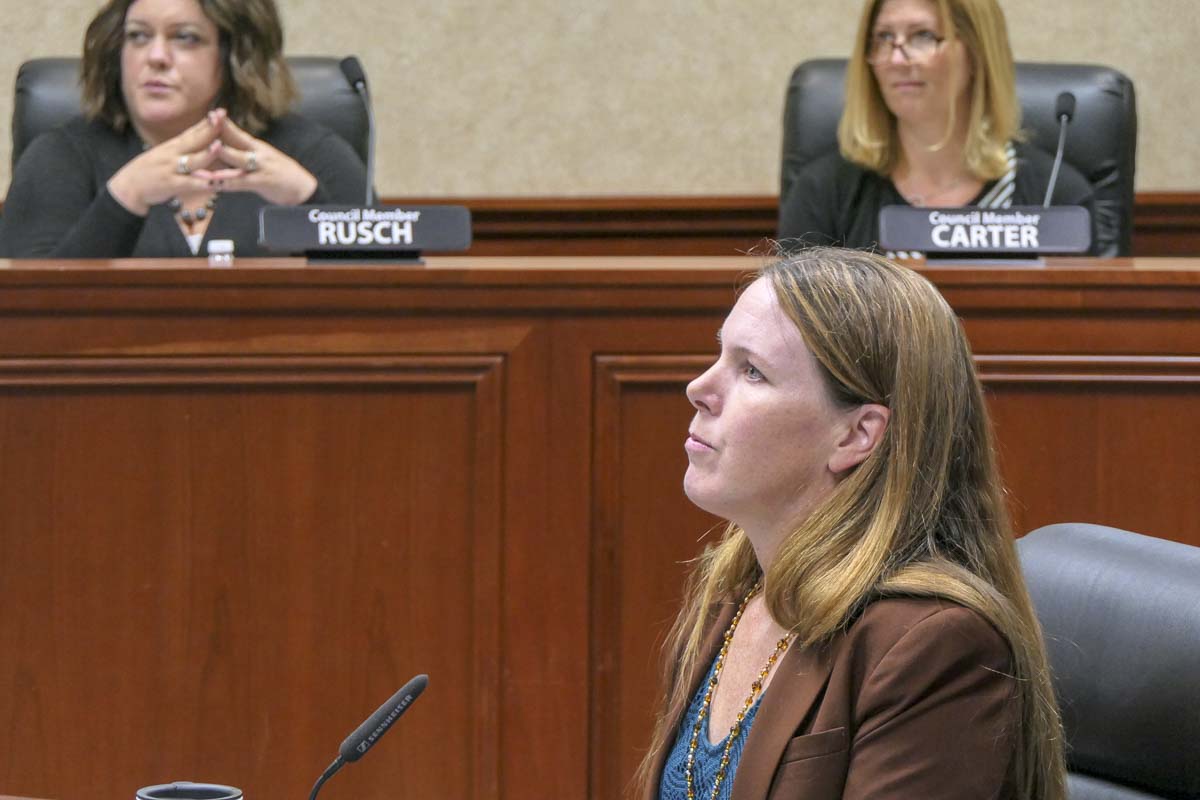
A tree unit is based on the size of the tree, starting at one unit for a tree 1-5 inches in diameter at breast height, on up to a full 20 units for a tree with a 4-foot diameter trunk.
“With this new proposal we’d be able to say, ‘hey this tree right here would get you 20 tree units, right there,” says Fox. “Save that tree and maybe you wouldn’t need to plant as many trees as well.'”
The goal of that would be to incentivize builders to look at saving old growth trees, rather than simply removing them and looking to plant new trees.
Fox says they also added language in the most recent revision to reduce the burden on single homeowners.
“The intent of these regulations about minimum tree units is really focused on our new land divisions, our new commercial developments, or new industrial developments,” says Fox. “It’s not meant to apply to a single family lot, or someone’s property that they haven’t built on yet but it’s part of a subdivision or a plat.”
Street trees
A major concern raised by Camas residents centered around trees planted along area streets. While city policy made it clear that developers had to add street trees, there wasn’t anything preventing them from later being removed. Under the new policy, people need to get a permit to remove a street tree. While those permits initially will be free, there are now fines from $250-$1,000 if the street tree isn’t replaced within six months.
Fox says the point of not charging a fee for a tree removal permit is that they believe just requiring one will greatly reduce the current workload for city staff when it comes to dealing with tree removal complaints.
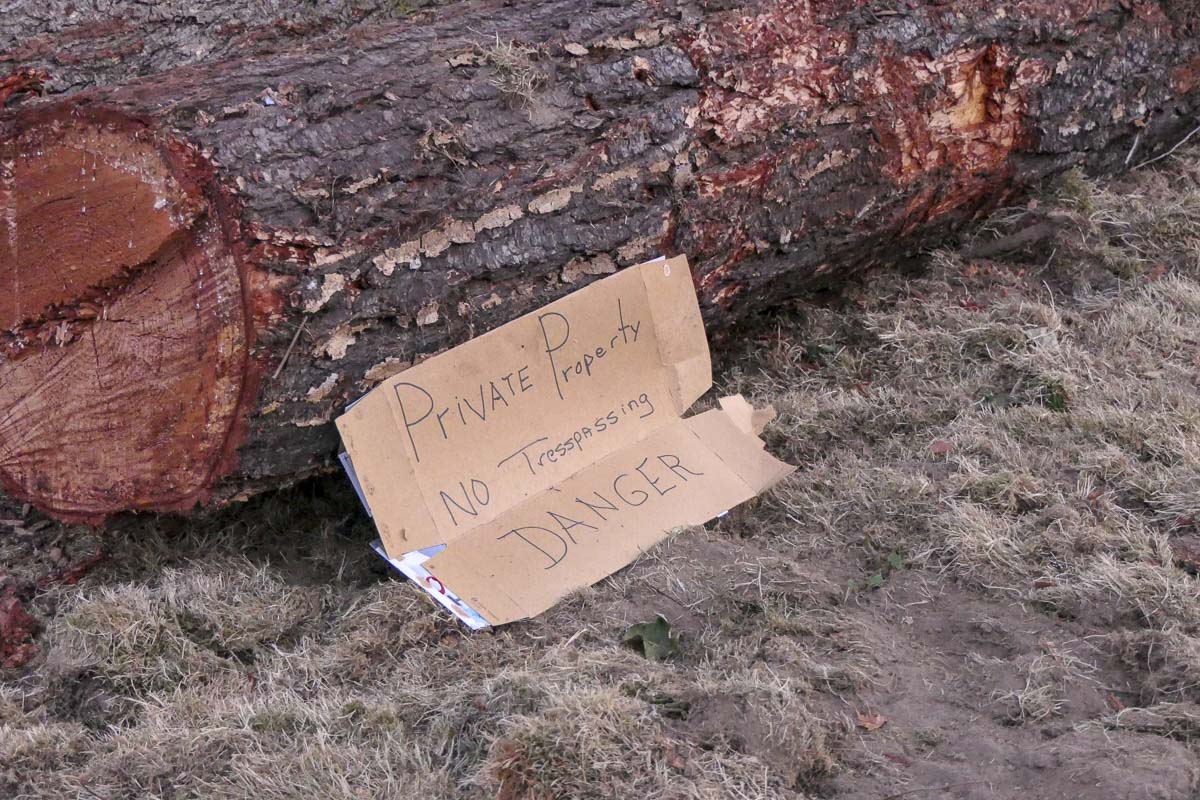
“Our current workflow is pretty interesting because we’ll get a phone call … generally it starts with a call to our front desk, and that call will be routed to someone based on whether or not it’s their private lot, or it’s out in our open spaces, and one of those staff will get the phone call,” Fox says, adding that this new process should give citizens a more direct way to complain, and help city staff better enforce the rules.
“This Urban Tree Program, it’s a new program, says Fox. “It’s not just one code change, it’s not just our street trees, it’s not just looking at our open space regulations or fines. It defines every aspect of trees in the city of Camas.”
While most of the residents who showed up to speak felt that the policy was, in part, a win, most felt it didn’t go far enough. Most wanted the 30 tree unit requirement, and stronger language to prevent old growth from being cut down.
“I hope that first and foremost in your mind is the citizens of Camas, not the developers,” said Anastasia McDonnell. “The developers can take a hike and go somewhere else. Now I know we’re not thinking that, because we want positive growth. But I think there’s a way to do positive growth, and to keep our tree canopy.”
Council Member Deanna Rusch voted for the proposal, as did all of her colleagues, but said she hopes it’s just a starting point.
“From my perspective, I would love it if the fines were higher and if it were 30 (tree units) instead of 20,” Rusch said. “I understand why the compromises were made, in looking at all the factors. But I think that this is better than what we have now.”
As for maintaining native plants, and providing a variety of trees for local wildlife, the new policy would require that 60 percent of any new trees planted be native species, and half of them be evergreens. That addressed a major concern brought up by residents that the developers would just plant whatever was cheapest and easiest to meet their tree unit quota for a new development. Fox says they’re hopeful the new code, which also incentivizes keeping groups of trees, or trees on the boundary of a property, will address those concerns.
“We were looking more at proposals where we could have healthier trees, not just a tree tract to meet that tree count,” she told the council.
A first step
A number of citizens said they hope the council will keep an open mind going forward, and considering raising the fines much higher in the future. They worry developers or neighbors looking for a better view will simply opt to pay the fines.
“I had a neighbor up in Washougal who went onto her neighbor’s property, cut down two trees in order to gain an excellent view, was then fined $10,000,” said Karen Weiss. “To her it was worth it. She didn’t care that she was fined, because her property went up $80,000.”
Fox says they tried to address that by adding stiffer penalties on top of existing ones, and requiring that any trees removed illegally on public lands would have to be replaced at the expense of the person who removed them. Camas has long dealt with the problem of property owners removing trees or other natural objects in city parks or public lands.
The mood as people filed out after the council unanimously instructed the city attorney to draft an ordinance based on the staff proposal was optimistic. Many felt that at least some action was being taken, even if the dozens of existing developments in the pipeline likely wouldn’t need to comply with the new rules.




